Aluminum oil and water pumps covers
Oil Pump,Aluminum Oil Pump,Aluminum Mold Oil Pump,Aluminum Die Casting Oil Pump Ningbo Jinyao Machinery Company. LTD , https://www.cardiecastingmold.com
The oil pump in an internal combustion engine circulates engine oil under pressure to the rotating bearings, the sliding pistons and the camshaft of the engine. This lubricates the bearings, allows the use of higher-capacity fluid bearings and also assists in cooling the engine.
As well as its primary purpose for lubrication, pressurized oil is increasingly used as a hydraulic fluid to power small actuators . One of the first notable uses in this way was for hydraulic tappets in camshaft and valve actuation. Increasingly common recent uses may include the tensioner for a timing belt or variators for variable valve timing systems.
High Oil Pressure
The end result of too high an oil pressure is the front or rear main engine seals will be blown and or blow the oil plugs out. In other words, any possible entry into the crankcase that is sealed somehow could be blown. High oil pressure frequently means extremely high pressure on cold start-up, but this is a design flaw rather than an automatic consequence of high pressure. The observation "if you raise the maximum pressure, the cold pressure goes too high" is accurate, but not intentional.
Even the stock pumps (regardless of brand and model) do not have enough relief valve capacity: the relief port is too small to handle the volume of cold oil. This is why there is a significant difference between cold & hot oil, high & low RPM, & c., But it's typically not a problem with stock engines because of the spring-loaded pressure relief valve mentioned above. A correctly designed relief port (which is not found in production engines) will flow any oil volume the gears will pass , Regardless of oil viscosity or temperature, and the gauge reading will only vary slightly.
The oil pressure is monitored by an oil pressure sending unit, usually mounted to the block of the engine. This can either be a spring-loaded pressure sensor or an electronic pressure sensor, depending on the type of sending unit. Problems with the oil pressure sending unit or the connections between it and the driver's display can cause abnormal oil pressure readings when oil pressure is perfectly acceptable ...
Low Oil Pressure
There are only 4 reasons for low oil pressure. 1) no oil or low oil in the engine, 2) worn or defective oil pump or broken pressure relief valve spring, 3) worn main bearings (big ends have nothing to do with oil pressure as most of the pressure to these are supplied by centripetal force) and 4) oil gallery fracture or blockage. Low oil pressure can cause engine damage. First thing to fail will be cam carrier bearings if vehicle is OHC as this is fed through a restrictor and low pressure will starve top of engine of lube. If pistons have crown jets eg scania, could cause piston / liner nip. Also the crankshaft and connecting rod bearings will seize. Indications of low oil pressure may be that the warning light is on, a low pressure reading on the gauge, or clattering / clinking noises from the engine.Low oil pressure is a problem that must be addressed immediately to prevent serious damage.
The leading cause of low oil pressure in an engine is wear on the engine's vital parts. Over time, engine bearings and seals suffer from wear and tear. Wear can cause these parts to eventually lose their original dimensions, and this increased clearance allows for a greater volume of oil to flow over time which can greatly reduce oil pressure. For instance, .001 of an inch worn off of the engine's main bearings can cause up to a 20% loss in oil pressure. Simply replacing worn bearings may fix this problem , but in older engines with a lot of wear not much can be done besides completely overhauling the engine.
Particles in the oil can also cause serious problems with oil pressure. After oil flows through the engine, it returns to the oil pan, and can carry along a lot of debris. The debris can cause problems with the oil pickup screen and the oil pump itself. The holes in the oil pickup screen measure about 0.04 square inches (0.26 cm 2 ). Holes of this size only pick up bigger pieces of debris and allow a lot of smaller pieces to flow through it. The holes in the screen are so big (relative to debris) because at low temperatures and slow engine speed the oil is very viscous and needs large openings to flow freely. Even with these large holes in the screen, it can still become clogged and cause low oil pressure. A .005 -inch-thick (0.13 mm) coating on the screen can reduce hole size to about .03 square inches (0.19 cm 2 ), which in turn reduces the flow of oil by 44 percent.
Even after passing through the oil pickup screen and the oil filter, debris can remain in the oil. It is very important to change the oil and oil filter to minimize the amount of debris flowing through your engine. This harmful debris along with normal engine wear in high mileage engines causes an increase in clearances between bearings and other moving parts.
Low oil pressure may be simply because there is not enough oil in the sump, due to burning oil (normally caused by piston ring wear or worn valve seals) or leakage. The piston rings serve to seal the combustion chamber, as well as remove oil from the internal walls of the cylinder. However, when they wear, their effectiveness drops, which leaves oil on the cylinder walls during combustion. In some engines, burning a small amount of oil is normal and shouldn't necessarily cause any alarm, whereas burning lots of oil is a sign that the engine might be in need of an overhaul.
Oil Pumps in High Performance Engines
Not all engines have the same oiling needs. High performance engines, for example, place higher stress on the lubricating system. In this case, the lubricating system must be especially robust to prevent engine damage. [2] Most engines in cars on the road today don't run much past 5,000–6,000 rpm, but that isn't always the case in performance engines, where engine speeds could reach up to 8000-9000 rpm. In engines like these, it is imperative that the oil circulates quickly enough , or air may become trapped in the oil. Also, to free up power, some engines in performance applications run lower weight oil, which requires less power to run the oil pump. Common oil weights in engines today are usually either 5W-30 or 10W-30 oil, whereas performance engines might use 0W-20 oil, which is less viscous.
Wet and dry sump systems
Conventional wet sump engines have one oil pump. It is generally located inside the lower part of the engine, usually below and / or to one side of the crankshaft. On dry sump engines, at least two oil pumps are required: one to pressurize and distribute the oil around the engine components, and at least one other 'scavenge pump' to evacuate the oil which has pooled at the bottom of the engine. This scavenge pump is sometimes (but not always) located in the 'sump' of the engine , and crucially, this scavenge pump's flow-rate capacity must exceed that of the pump which pressurizes and distributes oil throughout the engine.
Because of the dry sump's external oil reservoir, excess air can escape the oil before the oil is pumped back through the engine. Dry sumps also allow for more power because they reduce the amount of windage , oil sloshing up into the rotating assembly, and the vacuum from the scavenge pump improves ring seal. Dry sumps are more popular in racing applications because of the improved power and reduced oil sloshing that would otherwise reduce oil pressure. Disadvantages of dry sumps are increased weight, additional parts, and more chances for leaks and problems to occur.
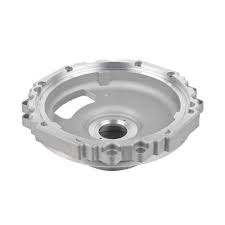

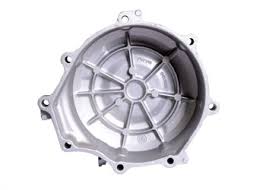

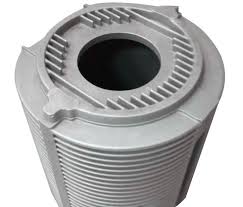
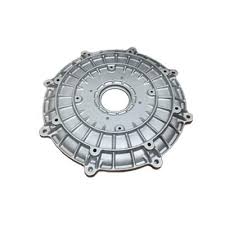
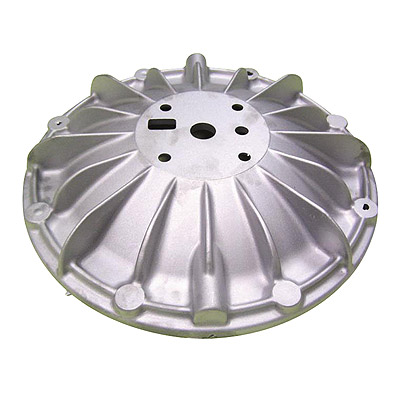
[China Agricultural Machinery Industry News] As a large agricultural country, agricultural machinery plays an indispensable role in production, especially in the three summer seasons , agricultural machinery into the main force of agricultural harvesting. However, how can agricultural machinery play a better role is a key issue. How much do you know about agricultural machinery maintenance knowledge?
Agricultural machinery maintenance eight "minefields" See you recruited?
1. Check the oil in the oil pan of the engine only to see the oil quantity, not the quality. Some agricultural machine operators only add and replenish the oil in the oil pan, and ignore the inspection of the oil quality. Because the oil used for a long time contains a large amount of oxides and metal chips, the oil is thinned and the lubricating performance is lowered. Therefore, it is necessary to add not only the oil according to the requirements of the engine instruction manual, but also to change the oil regularly.
2, only pay attention to the cleaning of fuel, ignoring the cleaning of lubricating oil. When some agricultural operators add fuel to the engine, they only pay attention to the cleanliness of the fuel, and filter it with a strainer or filter cloth, while neglecting the cleaning of the lubricating oil (oil, gear oil). If the lubricating oil is not clean, it will also aggravate the wear and damage of the machine and cause malfunction.
3. Only maintain the air filter, do not maintain the exhaust pipe and muffler. Some agricultural operators only maintain the air filter, never remove the carbon deposits in the exhaust pipe and the muffler, resulting in too much carbon deposit, resulting in exhaust gas exhaustion, engine start-up, power reduction and so on.
4. Add cooling water only, regardless of the cooling effect. Some agricultural operators never remove the scale in the cooling system. Although the cooling water is sufficient, the cooling effect is very poor, causing the engine to overheat and other faults.
5, only pay attention to the state of the valve and valve seat, ignoring the quality of the valve spring. When the valve leaks, the agricultural machine only checks the valve and the valve seat, and ignores the inspection of the valve spring. It should be pointed out that the valve spring has insufficient elasticity and is one of the causes of valve leakage.
6. Check and adjust the valve clearance based on experience and feeling. Some operators do not need special tools to check and adjust the valve clearance. Instead, they use the sway of the valve rocker arm to check and adjust the valve clearance. This has an impact on the operation of the diesel engine, but the fuel consumption is increased. The power is reduced, and the piston and the valve are collided, and even a bad fault such as a rotten piston, a broken crankshaft, or a curved connecting rod is caused.
7. Pay attention only to the quality of the plunger coupler and the nozzle needle valve, and do not pay attention to the quality of the oil outlet valve. The function of the oil discharge valve is to seal, the plunger oil chamber is separated from the high pressure oil pipe lumen at regular intervals to prevent the diesel oil from flowing back; the second is to quickly depressurize the oil supply when the oil supply is stopped, so as to ensure that the fuel injection nozzle is broken. After the oil valve coupler wears, it will cause difficulty in starting the diesel engine and reduce the power.
8. The tightening of the bolt and nut is as good as possible. Some important bolts and nuts on the agricultural machinery have a certain torque regulation when tightening. If the screw is too tight, the bolt will be slipped or even twisted. Therefore, some important bolts and nuts should be tightened according to the specified torque, and they should not be tightened too tightly.
Therefore, to play the role of a good agricultural machine, we need to do the above.
(Original title: Eight major mistakes in agricultural machinery maintenance)